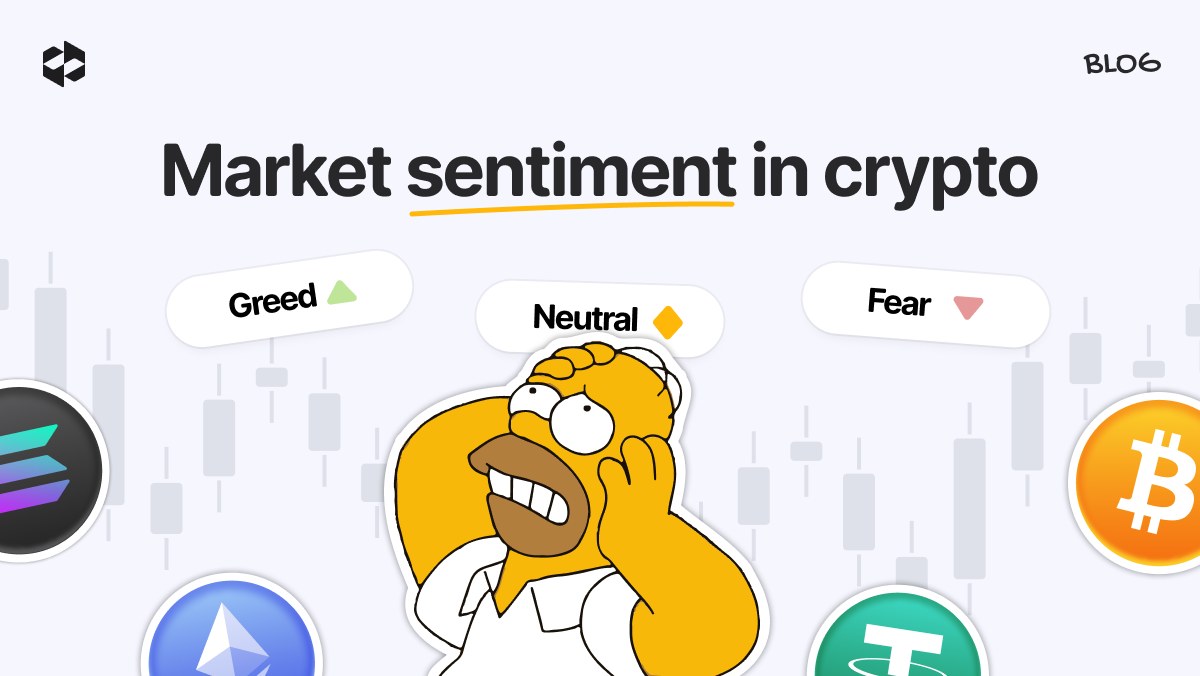
Market sentiment analysis is the practice of predicting potential market movements by assessing the collective mindset of cryptocurrency traders. It provides insights into future market directions by examining the prevailing attitudes and emotions of investors. This approach is crucial in the highly volatile cryptocurrency market, where price swings can be heavily influenced by changes in trader sentiment.
Unlike traditional technical analysis, which focuses on historical price data and trends, or fundamental analysis, which considers economic and financial factors, sentiment analysis delves into the psychological aspects influencing market behavior. It interprets signals from investor commentary, market news, and social media activity to offer traders a more comprehensive perspective.
By anticipating market dynamics before they are reflected in price charts, sentiment analysis offers invaluable information, giving traders an advantage in navigating the cryptocurrency landscape. Utilizing sentiment analysis enables traders to gain a broad understanding of the market and the impact of trader psychology on cryptocurrency movements.
What is crypto sentiment?
In the financial context, "sentiment" refers to the prevailing views or opinions about the condition of a market. Crypto market sentiment specifically describes the overall emotional outlook and attitudes of investors toward cryptocurrency assets. It reflects the collective psychology of those involved in trading and developing cryptocurrencies, as seen through social and trading metrics.
Crypto sentiment can be either bullish or bearish. A bullish sentiment signifies that investors are confident and optimistic about the future value of cryptocurrencies, resulting in increased buying pressure. On the other hand, a bearish sentiment indicates negativity or skepticism about the market's future, potentially leading to a sell-off.
Crypto market sentiment analysis is essentially a psychological evaluation of the factors influencing cryptocurrency price movements.
Investors' feelings about a cryptocurrency can significantly affect market cycles and its price. When enough traders act on shared ideas, thoughts, and emotions (regardless of their basis in real-world information), it can lead to substantial market consequences. A prime example is how Elon Musk’s tweets have impacted Bitcoin’s price, demonstrating the effects of bullish sentiment.
Source: X
How to measure market sentiment
Several key statistics can help analyze cryptocurrency market sentiment, such as funding rates, sentiment indices, social media and community analytics, and whale monitoring. These metrics provide crucial insights into the movements and trajectory of cryptocurrency assets.
Funding rates
The funding rate of a cryptocurrency is a trackable metric that often aligns with market sentiment. Funding rates reflect periodic payments made to traders based on the price differences between cryptocurrency perpetual contracts and the spot price of currencies or tokens.
Positive funding rates indicate a bullish market where long traders pay short traders.
Negative funding rates indicate a bearish market where short traders pay long traders.
Funding differences arise from traders borrowing USD in a bullish market to buy Bitcoin or other cryptocurrencies.
For funding rate data, check your preferred crypto-derivatives exchange or consult sources like:
Understanding sentiment indices
Sentiment indices use numerical indicators to assess the current state of cryptocurrency markets, reflecting whether investors are acting fearfully or greedily. Influences include volatility, market momentum, investor surveys, Google Trends, and junk bond demand.
- A fearful market is often seen as a buying opportunity.
- A greedy market suggests it might be time to sell.
Social media and community analysis
Social media activity on platforms like Twitter, Discord, Telegram, and Reddit is vital for assessing crypto market sentiment. An active and engaged community with significant followers and meaningful interactions often indicates bullish sentiment. Google Trends can also show whether searches for specific cryptocurrencies are trending up or down.
Look for hype around a crypto asset and investor feelings about current developments. High social media activity often predicts upcoming market movements.
Whale monitoring
A cryptocurrency whale is an investor who holds and trades large amounts. Whale monitoring involves tracking the activities of these major players to gauge market trends.
Tools for tracking whale activity include:
Fear & Greed index
Source: https://edition.cnn.com/markets/fear-and-greed
This global market sentiment indicator ranging from 0 (extreme fear) to 100 (extreme greed) assesses volatility, momentum, social media, surveys, Bitcoin dominance, and Google Trends.
Bull & Bear Index
This indicator focuses on social media metrics to quantify crowd psychology using AI to analyze topics and conversations on platforms like Bitcoin Forum, Reddit, and Twitter.
DeFi Total Value Locked (TVL)
This indicator represents the health of DeFi markets by factoring in current supply, maximum supply, and cryptocurrency value. The TVL ratio helps assess whether an asset is overvalued or undervalued.
How reliable is crypto market sentiment?
Crypto market sentiment can be a valuable tool, but aggregating public opinions, attitudes, moods, and outlooks is inherently indefinite. Combining sentiment analysis with technical and fundamental analysis provides a clearer picture of price action.
Bottom line
Cryptocurrency market sentiment analysis empowers investors with broad market insights, aiding in the formulation of successful trading strategies. As with any financial investment, having more information increases your chances of understanding the market and making informed trades. Market sentiment, driven by psychology, is crucial for navigating the crypto landscape.
